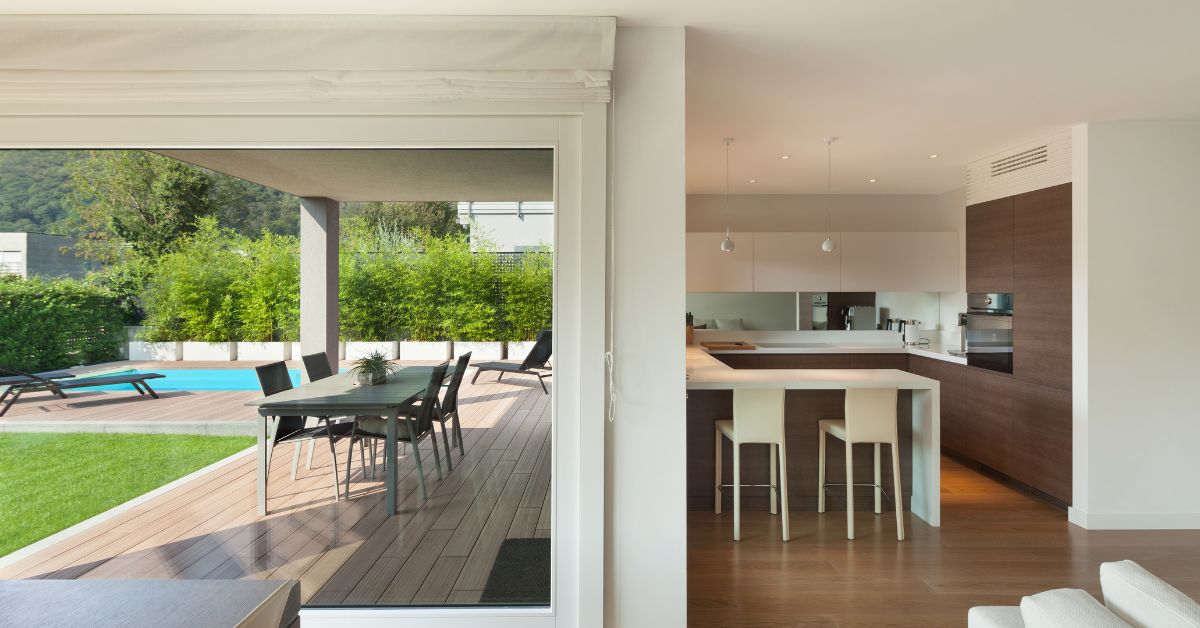The real estate industry has undergone a paradigm shift. From merely brick-and-mortar assets, properties have evolved into experience-centric spaces. This transformation, while enhancing resident satisfaction, has a direct influence on the profitability of property owners. In their comprehensive article, "Optimizing the Resident Experience: 20 Top Experts Weigh In," Second Nature brings forward insights from industry leaders that resonate with this idea. Drawing inspiration from their findings, this article sheds light on the symbiotic relationship between positive resident experiences and the financial gains of property owners.

The Resident-Centric Approach: How Focusing on Tenant Experience Can Drive Property Revenue
The real estate landscape is increasingly recognizing the power of tenant experience in determining the profitability and success of property investments. Adopting a resident-centric approach is not merely a strategic shift in mindset but a concrete way to enhance revenue streams. Let’s dive deeper into this transformative approach:
1. Beyond Bricks and Mortar:
While the aesthetics and maintenance of a property play a critical role in attracting tenants, today’s discerning residents seek more. They are in pursuit of an experience, a lifestyle. This can range from the ambiance of the property, and the sense of community fostered, to the responsiveness of property management.
2. The Economics of Tenant Retention:
It's a well-known fact in property management that it's more cost-effective to retain an existing tenant than to acquire a new one. Turnovers entail costs - from marketing vacancies, and potential refurbishments, to the administrative costs of signing new leases. A resident-centric approach, focusing on keeping the current tenants happy, can significantly lower these overheads.
3. Word-of-Mouth Marketing:
In the age of online reviews and social media, every resident can be a brand ambassador or a critic. A satisfied resident is more likely to refer friends, family, or colleagues, acting as free marketing agents for the property. Conversely, a disgruntled tenant can deter potential tenants. The impact of online ratings and reviews on property appeal cannot be underestimated.
4. Tailored Experiences:
A resident-centric approach often involves personalizing the tenant experience. This could be through recognizing special occasions, addressing unique maintenance requests promptly, or even organizing community events. Such gestures make tenants feel valued, fostering loyalty and reducing the chances of them seeking alternative accommodations.
5. Feedback as a Goldmine:
Embracing a resident-centric model involves actively seeking and valuing resident feedback. Regular check-ins, surveys, or suggestion boxes can offer valuable insights. This feedback not only helps address immediate concerns but can guide future investments, ensuring that property enhancements align with tenant desires, leading to higher rental yields and occupancy rates.
6. Comprehensive Services:
Today's tenants, especially in urban settings, often seek convenience. Offering services such as concierge, laundry, or even daycare can be a game-changer. While these require investments, they can command higher rents and ensure longer tenancy contracts.
Shifting from a traditional property-focused approach to a resident-centric model is both a strategic and economic imperative for modern property owners. As the real estate industry becomes increasingly competitive, offering an unparalleled tenant experience is the surefire way to distinguish one's property, ensuring both higher revenues and a robust reputation in the market.

Quantifying Resident Satisfaction: Measuring the Direct Influence on Property Owners' Profit Margins
Measuring resident satisfaction isn't just about understanding how your tenants feel, it's about translating that understanding into tangible financial gains. While the general idea is that satisfied residents lead to better profitability, how can property owners precisely quantify this? Below we delve deeper:
1. Surveys:
- Purpose: Regular tenant surveys can provide a comprehensive understanding of the resident's experience, encompassing everything from amenities to management responsiveness.
- Benefits for Owners: By identifying areas of improvement, property owners can implement targeted solutions, potentially increasing rental rates and decreasing vacancies.
- Best Practices: Use a mix of open-ended questions and Likert-scale questions to capture qualitative and quantitative feedback.
2. Feedback Systems:
- Purpose: Unlike scheduled surveys, feedback systems allow residents to voice their concerns, compliments, or suggestions anytime.
- Benefits for Owners: Real-time feedback can help address concerns before they escalate, potentially preventing negative reviews online which can dissuade prospective tenants.
- Best Practices: Ensure easy accessibility of these systems and encourage residents to use them.
3. Retention Rates:
- Purpose: Retention rate metrics show how many tenants renew their leases year over year.
- Benefits for Owners: High retention rates often mean reduced marketing and turnover costs. Plus, long-term residents might be willing to pay slightly higher rents for renewals, especially if they’re satisfied.
- Best Practices: Compare your property's retention rates with industry averages to gauge performance.
4. Vacancy Rates vs. Satisfaction:
- Purpose: By correlating satisfaction data with vacancy rates, one can observe how satisfaction levels might be affecting property occupancy.
- Benefits for Owners: Low vacancy rates due to high satisfaction means consistent rental income and reduced costs associated with finding new tenants.
- Best Practices: Keep a monthly track of vacancies and try to correlate it with the feedback received in that period.
5. Turnover Costs and Resident Satisfaction:
- Purpose: Assess how resident satisfaction levels influence turnover costs, such as refurbishment expenses and marketing costs for new tenant acquisition.
- Benefits for Owners: By reducing turnover through higher satisfaction, owners can save significantly on these associated expenses.
- Best Practices: Always measure the ROI of efforts directed towards increasing resident satisfaction. If efforts are resulting in reduced turnover costs, they're likely worthwhile.
6. Rent Premiums for Satisfaction:
- Purpose: Understand if satisfied tenants are willing to pay a premium for their satisfaction.
- Benefits for Owners: This can lead to increased rental income without significant investments in property upgrades.
- Best Practices: Occasionally, test the waters by offering enhanced services or amenities and measure residents' willingness to accept a minor rent increase.
For property owners, understanding resident satisfaction isn't just about ensuring happy tenants. It's a strategic move that, when quantified effectively, can lead to significant financial gains. The key lies in continuous measurement, timely action, and a focus on creating a win-win situation for both residents and property owners.

From Complaints to Cash Flow: Resolving Issues Swiftly to Enhance Property Value
Resident complaints are an inevitable aspect of property management. However, the manner in which these complaints are addressed can spell the difference between a thriving, high-value property and one that struggles to retain residents and maintain profitability.
1. The Financial Impact of Unresolved Complaints:
Each unresolved complaint represents a potential decrease in property value. When residents feel unheard or unsatisfied, they might seek accommodations elsewhere, leading to increased vacancies. Moreover, the cost of acquiring a new tenant, which includes advertising, screening, and potential renovations, often surpasses the cost of retaining an existing tenant.
2. Viewing Complaints as Opportunities:
Smart property owners understand that every complaint is an opportunity in disguise. They offer insights into areas of improvement that might not have been previously obvious. By addressing these pain points, property owners not only resolve individual grievances but might also proactively tackle issues that could have been problematic for future residents.
3. Implementing a Proactive Complaint Management System:
A systematic approach to handling complaints ensures that nothing falls through the cracks. Property owners should consider:
- A dedicated channel for lodging complaints: This can be a digital portal, a phone hotline, or an in-person desk.
- Regularly reviewing and categorizing complaints: Recognizing patterns can help address root causes rather than just symptoms.
- Establishing a timeline for resolution: This provides residents with clear expectations and ensures accountability from the management's side.
4. The Ripple Effect of Quick Resolutions:
When residents see their complaints addressed promptly, it fosters trust and goodwill. They're more likely to renew their leases and less likely to seek alternatives. Furthermore, in an age of online reviews and social media, satisfied residents can become ambassadors for your property, sharing positive experiences and drawing in potential tenants.
5. Capitalizing on Positive Feedback and Referrals:
Once a complaint is successfully addressed, property owners should encourage residents to share their positive experiences. Offering incentives for referrals or even just acknowledging and thanking residents for positive reviews can go a long way. This not only builds a sense of community but also leverages resident satisfaction for organic marketing.
6. Continuous Learning and Improvement:
The journey doesn't end with a resolved complaint. Progressive property owners take it a step further by analyzing feedback to make informed decisions about property upgrades, amenity enhancements, and service improvements.
While no property owner relishes the idea of resident complaints, when approached strategically, they can become valuable tools for improvement and growth. By prioritizing swift resolutions and viewing feedback as a goldmine of insights, property owners can transform potential roadblocks into robust avenues for increased profitability and property value.

The Digital Advantage: Leveraging Technology to Improve Resident Experience and Property Returns
The advent of the digital era has transformed numerous industries, and real estate is no exception. For property owners, the amalgamation of technology and property management brings forth a plethora of opportunities. Here's a deeper dive into how leveraging technology can work wonders for both the resident experience and property returns:
1. Smart Home Integrations:
- Smart Thermostats: These devices not only provide residents with the ability to adjust their living conditions remotely but also lead to energy savings. For property owners, this adds a sustainable edge to their property, making it more appealing to eco-conscious renters.
- Security Systems: Smart doorbells with cameras, electronic lock systems, and motion sensor lights increase the sense of security among residents. It's a reassuring feature that can act as a significant draw for potential tenants.
- Connected Appliances: Internet-enabled appliances, such as refrigerators that can notify residents when they're running low on essentials or ovens that can be preheated on the way home, enhance daily living experiences.
2. Online Rent Payment Portals:
- Efficiency: Gone are the days of manual checks. Online portals facilitate instant transfers, ensuring that property owners receive their rent on time.
- Convenience: For residents, the ability to pay rent at the click of a button, set up automated monthly payments, and receive digital receipts is invaluable. This ease can significantly reduce payment-related disputes and enhance resident retention.
- Financial Tracking: Such portals often come with built-in analytics, allowing property owners to track payments, monitor delinquencies, and forecast economic trends.
3. Virtual Tours and Augmented Reality:
- Virtual Property Viewing: Especially relevant in today's world, where social distancing might still be a norm for some tenants, virtual property tours provide potential residents with an immersive experience of the property from the comfort of their homes.
- AR Furniture Placement: Augmented reality apps can assist potential residents in visualizing how their furniture and belongings would fit within a space, aiding in their decision-making process.
4. Data-Driven Property Management Solutions:
- Predictive Analytics: These solutions can forecast when maintenance is due or predict future market trends, allowing property owners to stay one step ahead and plan accordingly.
- Performance Metrics: Dashboards can provide property owners with an overview of occupancy rates, resident satisfaction scores, and operational costs, helping in strategic planning and decision-making.
- Feedback Collection: Automated surveys and feedback tools can capture residents' opinions, ensuring that property owners are aware of areas of improvement and can act on them promptly.
5. Digital Communication Channels:
- Instant Notifications: Be it a water shutdown or a community event, instant notifications ensure residents are always in the loop.
- Online Community Boards: Digital platforms where residents can communicate, share information, or even sell items can foster a sense of community, enhancing resident satisfaction and retention.
Incorporating technology into property management isn't just a luxury; it's rapidly becoming a necessity. While the upfront investment in these technologies might seem daunting, the long-term returns, both in terms of enhanced resident satisfaction and financial gains, are undeniable. Property owners who embrace this digital shift stand to gain a competitive edge in an increasingly tech-savvy market.

Creating Lasting Impressions: Designing Spaces that Elevate Resident Satisfaction and Owner Profits
Design plays a paramount role in determining the appeal of a property. With the world quickly recognizing the importance of well-designed spaces, it's not just about aesthetics, functionality, sustainability, and how the space affects its inhabitants.
1. Open Floor Plans: The Spacious Appeal
Open floor plans have gained popularity among modern renters for several reasons:
- Versatility: Such designs give residents the flexibility to tailor spaces according to their needs. Whether it's setting up a home office or creating a lounge space, open plans cater to diverse requirements.
- Social Interaction: For families and individuals who entertain guests, open designs foster interaction by creating a seamless transition between spaces like the living room, dining area, and kitchen.
- Perceived Space: Open designs, without obstructive walls, give an illusion of a larger area, making spaces feel expansive and less cramped.
2. Sustainable Designs: Future-proofing Your Property
Sustainability is no longer just a buzzword; it's a priority for modern renters:
- Energy Efficiency: Incorporating energy-efficient fixtures, windows, and insulation can reduce utility bills, serving as a selling point for potential tenants.
- Eco-friendly Materials: Using sustainable materials in construction and interiors can appeal to environmentally conscious renters. Bamboo flooring or recycled glass countertops, for instance, can be both stylish and sustainable.
- Green Spaces: Incorporating indoor plants, green walls, or even community gardens can boost air quality and overall resident well-being.
3. The Power of Natural Lighting
Never underestimate the allure of natural light:
- Psychological Boost: Exposure to natural light has been linked to improved mood, reduced depression, and better sleep. For many renters, large windows and skylights can be a decisive factor in property selection.
- Economic Benefits: Spaces that allow ample natural light can reduce reliance on artificial lighting during the day, lowering electricity costs.
- Aesthetic Value: Sunlit spaces often look more inviting and spacious, enhancing the aesthetic value of the property.
4. Other Design Elements to Consider
Beyond these core elements, property owners can also focus on:
- Smart Storage Solutions: Built-in storage, hidden compartments, and multi-functional furniture can appeal to renters who seek organized and clutter-free living.
- Soundproofing: Especially in urban settings, soundproofed properties can be a major draw, ensuring peace and quiet amidst city noise.
- Outdoor Spaces: Balconies, terraces, or small gardens can serve as a private retreat, adding significant value to the property.
In the realm of property management, the design stands as a silent ambassador of space. It speaks volumes about the property’s ethos and the lifestyle it offers. As the line between living and working spaces blur, and as well-being takes center stage, property designs that cater to these modern demands will undoubtedly command higher rents and enjoy increased valuations.
Final Thoughts and Conclusions:
The world of property management is undergoing a seismic shift, placing residents at the core of strategies, decisions, and actions. Recognizing this evolution is crucial, not just from a business perspective but also in terms of community building and long-term sustainability.
This move towards a resident-centric approach transcends being a mere trend. Instead, it represents a deeper understanding of the dynamics in real estate: the realization that properties aren't just physical structures. They are homes, spaces of comfort, and centers of communities. This perspective acknowledges the direct correlation between a resident's experience and the overall profitability of a property. A happy resident often translates to consistent revenue streams, fewer vacancies, and reduced maintenance issues.
Moreover, prioritizing the resident experience isn't just about immediate gains. Yes, a positive experience can lead to timely rent payments and possibly even justifications for rent increments. But beyond that, a satisfied resident becomes an advocate for your property. They're likely to refer friends and family, write positive reviews, and contribute to building a vibrant community within the property. This word-of-mouth marketing, which comes at no cost, can be more potent than any paid advertising campaign.

Furthermore, in an industry as competitive as real estate, fostering a loyal community can be a game-changer. Loyalty leads to longer tenant retention, reducing the costs and hassles of frequently finding new tenants. In the long run, a community-centric approach can be a protective shield against market volatility. Even in downturns or periods of oversupply, properties that prioritize resident well-being tend to fare better.
Lastly, we must appreciate the fluid nature of the real estate landscape. As it continuously evolves, driven by technological innovations, economic shifts, and societal changes, one thing remains constant: the human desire for comfort, security, and belonging. By centering property management strategies around these intrinsic needs, property owners are not just ensuring profitability but are also future-proofing their assets.
In conclusion, the resident-centric paradigm in property management is more than just a strategy—it's an ethos. It's about understanding the delicate balance between business and community, between profits and people. And in this delicate balance lies the future of successful property management.

.jpg)
